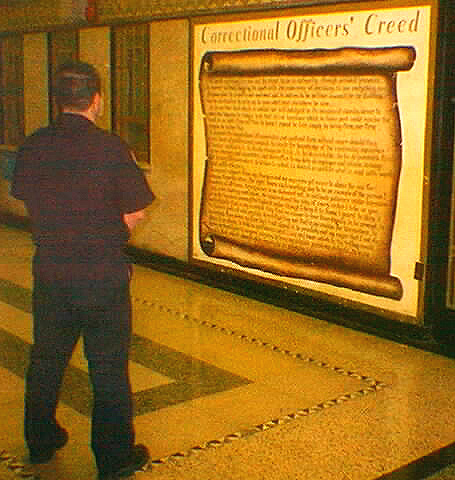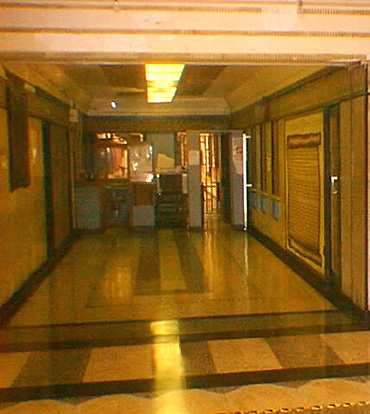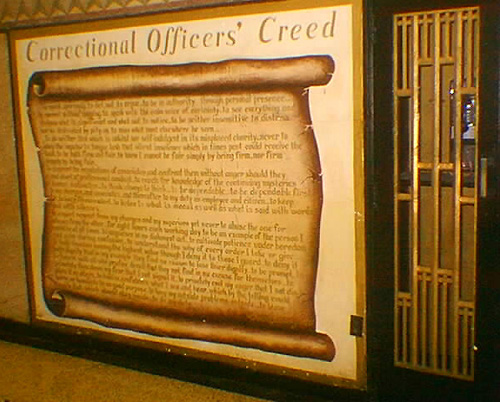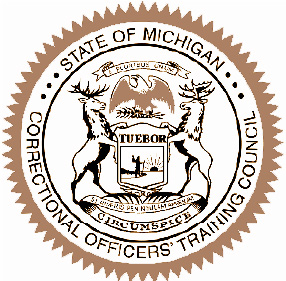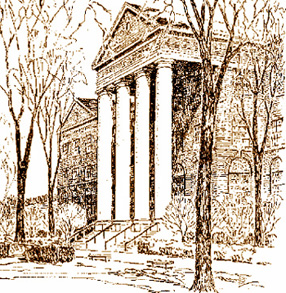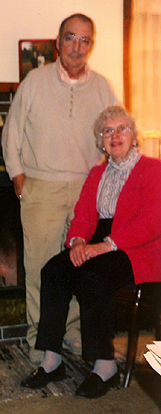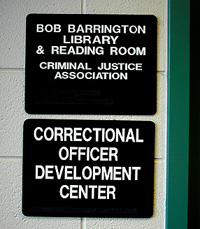
The story behind the 364-word mural in entrance hallway at JATC, formerly Rikers Island Penitentiary
A few strides inside the James A. Thomas Center, just beyond the entrance door of this former penitentiary on Rikers Island, the hallway wall on the right displays 1,649 characters carefully painted in 1995 by an inmate artist acting under supervision of the then detention facility's administration.
Here are those words and the story behind their placement on the wall: To speak sparingly ... to act, not to argue ... to be in authority through personal presence ... to correct without nagging ... to speak with the calm voice of certainty ... to see everything, know what is significant and what not to notice ... to be neither insensitive to distress nor so distracted by pity as to miss what must elsewhere be seen ... To do neither that which is unkind nor self-indulgent in its misplaced charity ... never to obey the impulse to tongue lash that silent insolence which in times past could receive the lash ... to be both firm and fair ... to know I cannot be fair simply be being firm, nor firm simply by being fair ...
To expect respect from my charges and my superiors yet never to abuse the one for abuses from the other ... for eight hours each working day to be an example of the person I could be at all times .. .to acquiesce in no dishonest act ... to cultivate patience under boredom and calm during confusion ... to understand the why of every order I take or give ... To hold freedom among the highest values though I deny it to those I guard ... to deny it with dignity that in my example they find no reason to lose their dignity ... to be prompt ... to be honest with all who practice deceit that they not find in me excuse for themselves ... to privately face down my fear that I not signal it ... to privately cool my anger that I not displace it on others ... to hold in confidence what I see and hear, which by the telling could harm or humiliate to no good purpose ... to keep my outside problems outside ... to leave inside that which should stay inside ... to do my duty.
Robert Barrington was a professor at Northern Michigan University in Marquette. A member of the university's Department of Criminal Justice studies, he died of cancer in 1992. Prof. Barrington personally knew what of he wrote. He also had close ties with correctional officers. His essays often dwelt on the challenges they face in carrying out their jobs and on the lack of public understanding of their profession. His Correctional Officers' Creed was adopted by the International Association of Correctional Officers, published in its quarterly magazine, and printed on small cards that became part of the package of materials given to new IACO members. At some point in 1995 that wallet-size Creed card came to the attention of JATC's administration.
At the time, an inmate mural painting program was in progress at the facility. So the idea of affixing the 364 words to the entrance hall wall came readily to mind.
Inmate mural painting took place during evening hours to avoid interfering with the heavy volume of hallway traffic during daytime hours. The name of the inmate artist still eludes research but he is believed to one who painted several JATC murals. By far, Prof. Barrington's best known essay is Correctional Officers' Creed. It has had wide-spread circulation in print media and on the web as well. Besides being mural-ized on Rikers Island, the words have been adopted and adapted by various correction agencies into their officer training programs Another Prof. Barrington essay also given some attention in correction circles has been his
The professional correctional officer follows a strange calling. He keeps people where they don't want to be and don't want to stay and no one likes him for it. By doing his job well, he helps inmates in ways they may not appreciate or acknowledge.
The correctional officer knows inmates as people, 24 hours a day. He knows them as does no other employee in the justice system. Their snores, coughs, moans and screams, and their fitful sleeplessness at night, their bathroom and eating habits, their bullying, their remarkable idiom and symbols, and unique body language, the kindness and tension rise and subside to mysterious, unconscious tides and social rhythms no sociological treatise will ever explain. Scholarly criminologists who never carried the keys frequently remark that correctional officers, like inmates, are "doing time." It is usually said for effect ... but it says nothing to the initiated. It isn't true.
If he is professional, the correctional officer does his job knowing he will not be romanticized by t.v. like police. By those who want him to be a helping person, he will be seen as punitive. They usually don't consider how hard it is for the normal person to routinely inflict discomfort without provocation. He will absorb and contain hostility without being himself hostile and will pay the price of that. He is the stuff high blood pressure is made of.
Those words and the Correctional Officers' Creed were authored by an academician whose knowledge of Correction and its Officers wasn't academic. Bob Barrington's early professional career years were spent, first as a Probation and Parole Officer and later as a Correctional Officer, with Wisconsin state correctional agencies. Given his B.A. and M. A. degrees in social work from the University of Wisconsin in Madison and his penchant for writing crisp, clear and often compelling prose, he rose steadily through the ranks and up the command ladder to become the superintendent of training, to sit on the state parole board and to chair its sex crimes panel. In 1968, Bob accepted an invitation to head a correctional training center at the University of Ottawa, returning to the U.S. about a decade later to chair the Criminal Justice Studies Department at the University of North Michigan in Marquette.
Through his work and writings with the International Association of Correctional Officers, his promotion of Correction professionalism extended beyond state and national boundaries. With advancing years, he stepped away from his UNM chairmanship but continued as a faculty member, teaching until his death in 1992. His survivors include his wife, four sons, a daughter and seven grandchildren. Mrs. Barrington presented the university with his collection of books and other reading materials on correctional-related subjects.
His widow, Florence, noted he came from a family of educators: "Both his parents were teachers and their three sons -- Bob and his two brothers -- all became educators." Florence said that Barrington, growing up during the Great Depression, used to visit the shanty camps of the unemployed poor near his hometown of Waupaca, Wisc.
After WWII Navy service in the European and Pacific Theatres, he pursued social work studies and entered upon a correctional career. "He wanted to make a difference," his widow said. Her soft voice pronounced the words with a firmness that reflected her unspoken conviction that he had. ---
To Rikers Pen/HDM/JATC inmate murals
|
